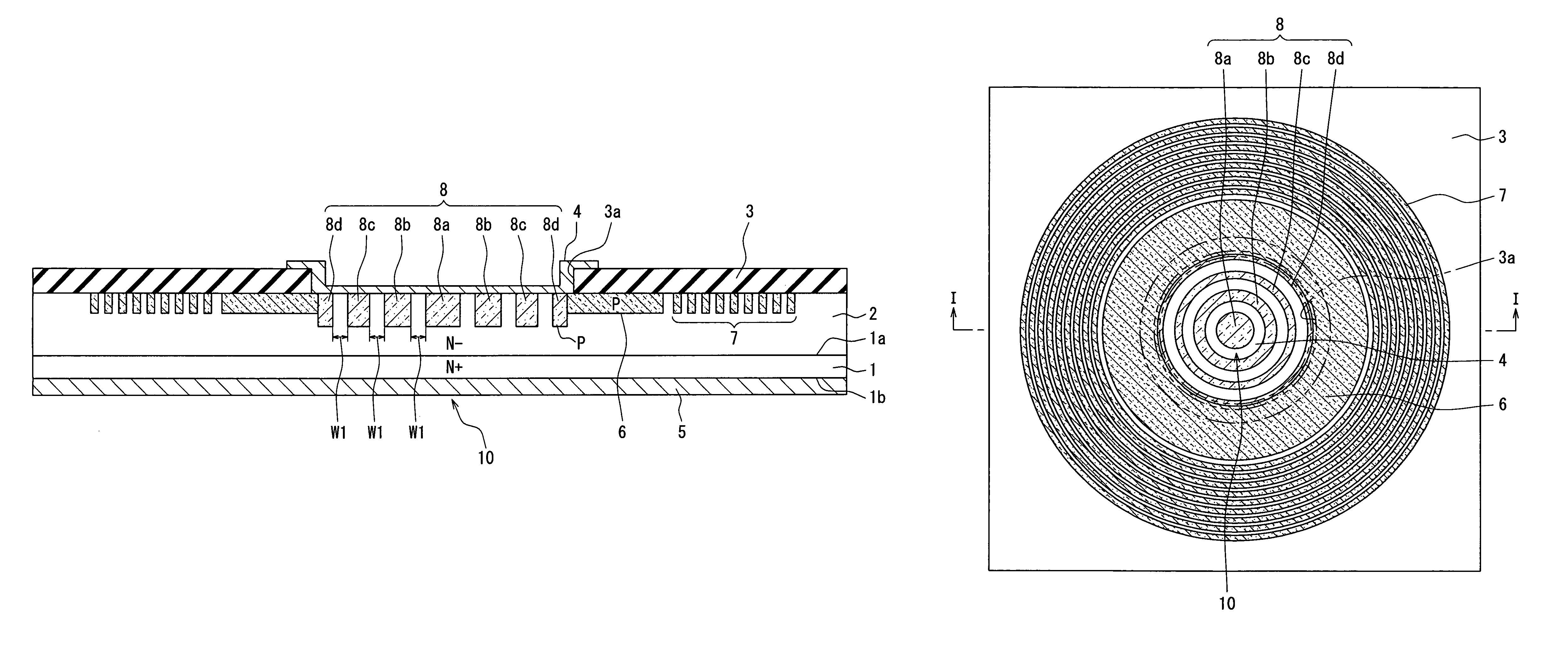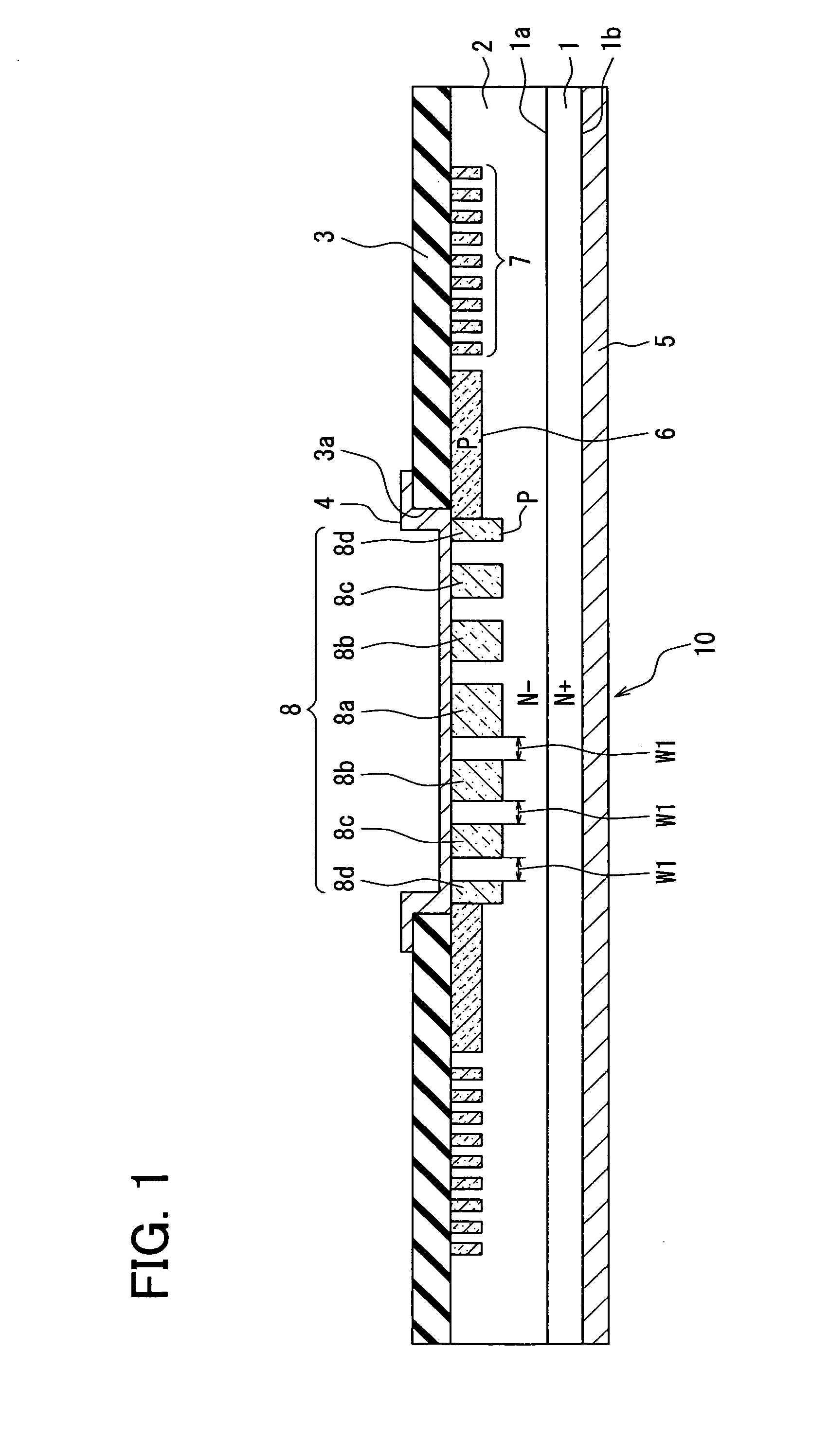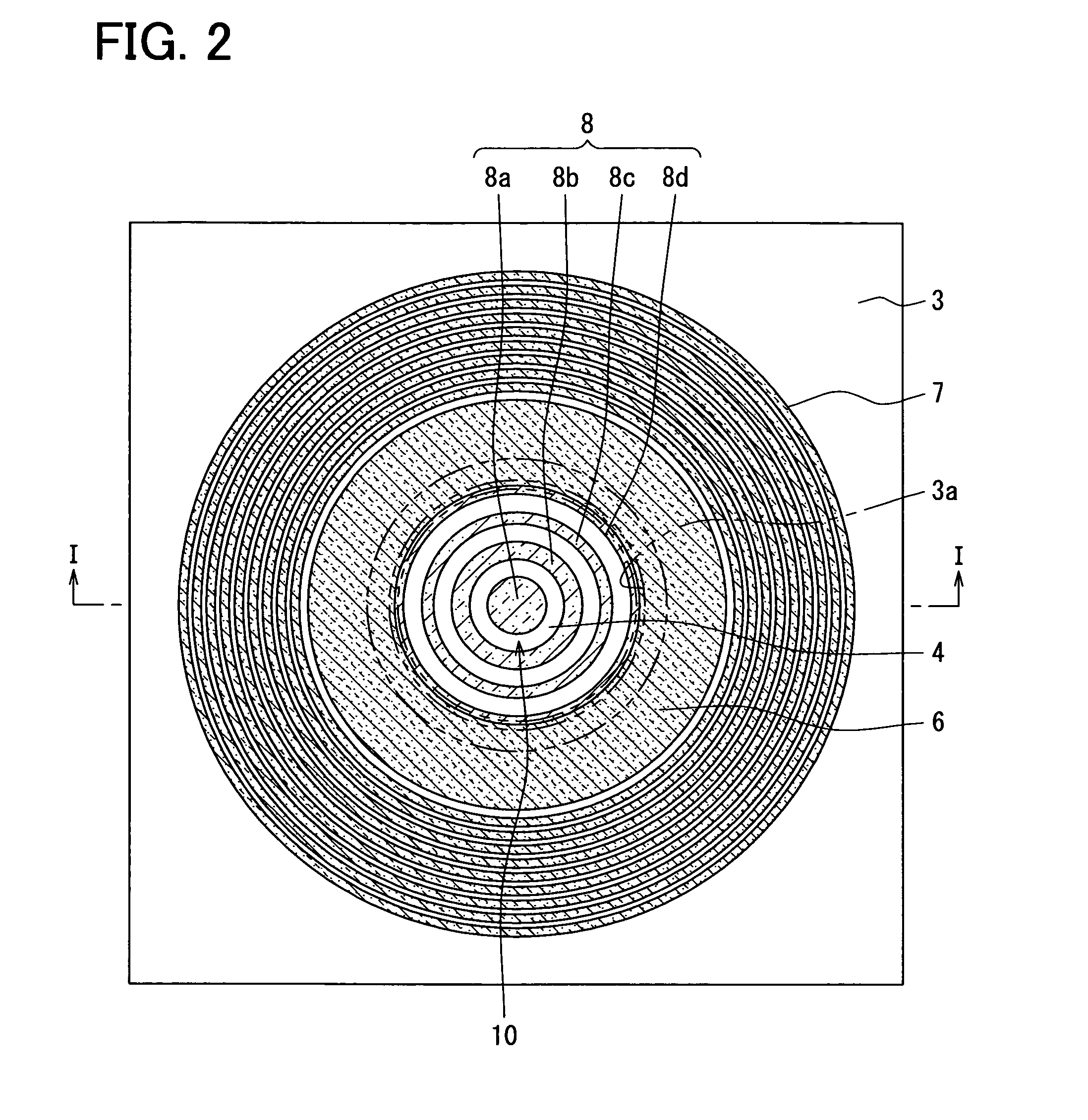Silicon carbide semiconductor device having junction barrier Schottky diode
a silicon carbide semiconductor and junction barrier technology, applied in the direction of semiconductor devices, basic electric elements, electrical appliances, etc., can solve problems such as failure of semiconductor devices, and achieve the effect of higher break down voltag
- Summary
- Abstract
- Description
- Claims
- Application Information
AI Technical Summary
Benefits of technology
Problems solved by technology
Method used
Image
Examples
first embodiment
[0020]An SiC semiconductor device having a JBS according to a first embodiment is described below with reference to FIGS. 1 and 2.
[0021]The SiC semiconductor device includes an N+ type substrate 1 made of SiC, the N− type drift layer 2 made of SiC. An impurity concentration of the N+ type substrate 1 is in a range, for example, between 2×1018 cm−3 and 1×1021 cm−3. The N+ type substrate 1 includes a top surface 1a and a bottom surface 1b opposite to each other. The top surface 1a and the bottom surface 1b are also referred to hereinafter as a principal surface 1a and a rear surface 1b, respectively. The N− type drift layer 2 made of SiC is disposed on the principal surface 1a. The N− type drift layer 2 may be a stacked layer. A dopant concentration of the N− type drift layer 2 is, for example, in a range between 2.5×1015 cm−3 and 7.5×1015 cm−3 and lower than that of the N+ type substrate 1. A portion of the N+ type substrate 1 and a portion of the N− type drift layer 2 provide a cell...
second embodiment
[0039]An SiC semiconductor device having a JBS according to a second embodiment is described below with reference to FIG. 4. Geometry of P type layers 8 according to the present embodiment is different from that of the P type layers 8 according to the first embodiment.
[0040]As shown in FIG. 4, a depth of each P type layer 8 is deeper than that of the P type resurf layer 6 and the P type guard ring layers 7 in a direction, for example, substantially perpendicular to the principal surface 1a of the substrate 1. The P type resurf layer 6 and the P type guard ring layers 7 are included in the termination structure. The depth of each P type layer 8 is, for example, in a range between 0.7 μm and 1.5 μm. A depth difference between each P type layer 8 and the P type resurf layer 6 is in a range between 0.2 μm and 1.0 μm. A depth difference between each P type layer 8 and each P guard ring layer 7 is also in the range between 0.2 μm and 1.0 μm.
[0041]Since each P type layer 8 is deeper than t...
third embodiment
[0042]An SiC semiconductor device having a JBS according to a third embodiment is described below with reference to FIG. 6. Depths of P type layers 8 according to the present embodiment are different from that of the P type layers 8 according to the first and second embodiments.
[0043]As shown in FIG. 6, a depth of one of the multiple P type layers is less than or equal to that of another one of the multiple P type layers, wherein the another one is disposed adjacent to the one of the multiple P type layers 8 and disposed closer to the center of the contact region than the one of the multiple P type layers 8. Some of the P type layers located around the center member 8a are configured to have a substantially equal depth. According to the above structure, when a depletion layer is created below a central portion of the contact region between the Schottky electrode 4 and the N− type drift layer 2, the depletion layer is located in a deep portion of the N− type drift layer 2. An electri...
PUM
 Login to View More
Login to View More Abstract
Description
Claims
Application Information
 Login to View More
Login to View More - R&D
- Intellectual Property
- Life Sciences
- Materials
- Tech Scout
- Unparalleled Data Quality
- Higher Quality Content
- 60% Fewer Hallucinations
Browse by: Latest US Patents, China's latest patents, Technical Efficacy Thesaurus, Application Domain, Technology Topic, Popular Technical Reports.
© 2025 PatSnap. All rights reserved.Legal|Privacy policy|Modern Slavery Act Transparency Statement|Sitemap|About US| Contact US: help@patsnap.com



